Ballooning Over Bullets, and Other Escapes From the Siege of Paris
On 23 November 1870, a gas-filled balloon carrying five men came to earth near the Belgian city of Leuven, its basket dragging across farmland for several kilometres before the anchor bit and it was brought to a halt. The balloon had taken off from Paris three hours earlier, flying over the Prussian troops then laying siege to the city. The Frenchmen were welcomed by the people of Leuven, and the same evening the pilot addressed a crowd at the Grand Café des Quatre Nations on the war and conditions inside the French capital.
The siege had begun in September, with the invading Prussians opting to starve the French capital into submission rather than take it by force. They had effectively won the war already, crushing the French army at Sedan and capturing Emperor Napoleon III, but there was continued resistance from the capital, where a group of Parisian deputies had set up a republican Government of National Defence.
Confined within the city, the government began using manned balloons to get news, letters and people to the outside world. The most famous passenger on these flights was interior minister Léon Gambetta, who escaped from the city in October so that he could direct the armed resistance against the Prussians from outside. The public could also pay to send their letters out by balloon, and occasionally private passengers were taken on board, so this effectively marked the beginning of both commercial passenger flight and airmail.
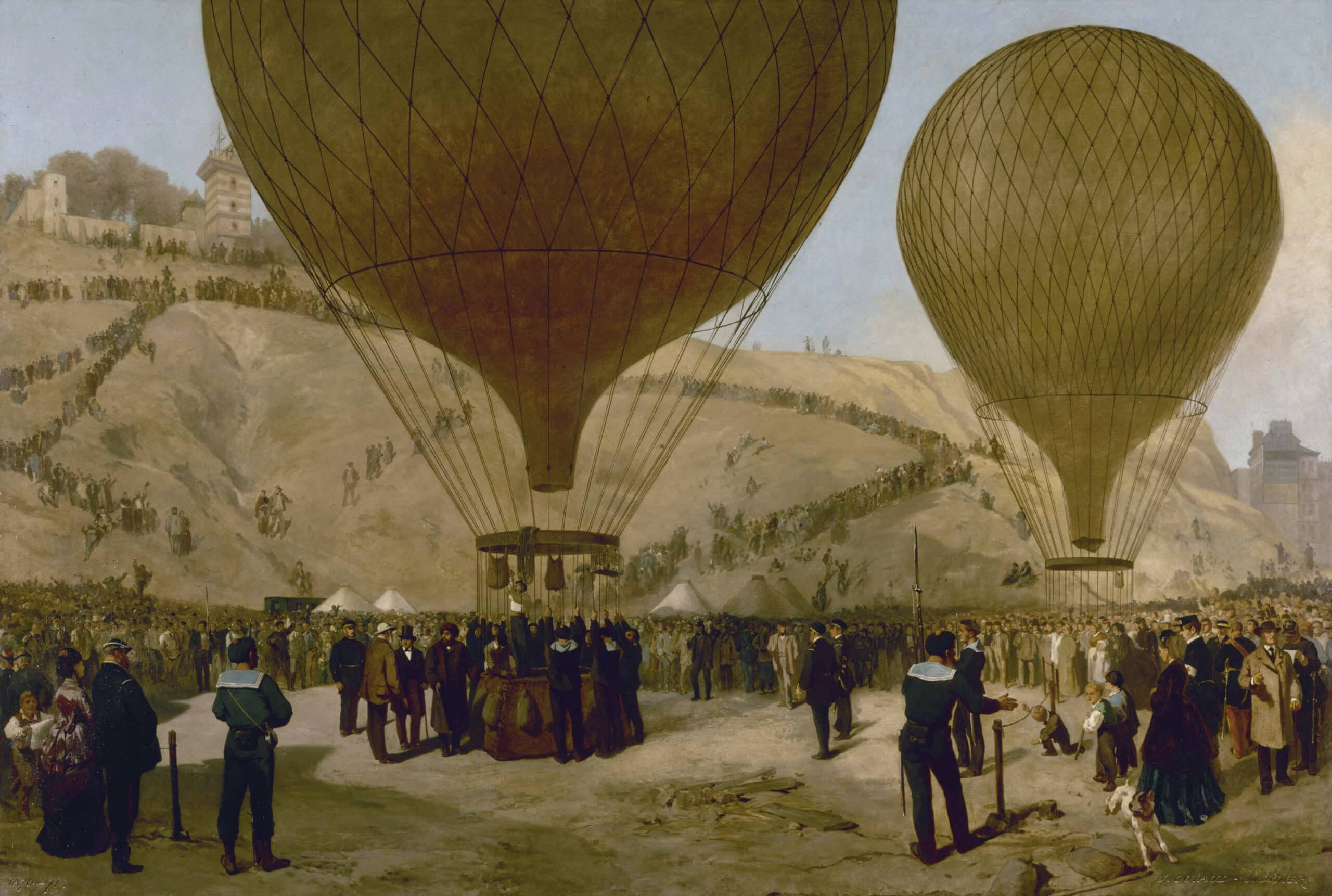 The departure of Léon Gambetta for Tours in the balloon Armand-Barbès, October 1870, painted by Jules Didier and Jacques Guiaud.
The departure of Léon Gambetta for Tours in the balloon Armand-Barbès, October 1870, painted by Jules Didier and Jacques Guiaud.© Musée Carnavalet, Paris
Hot-air and gas balloons had been carrying passengers since the late 18th
century, but there was still no way of steering. Travelling predictably from point A to point B was impossible. But for the besieged Parisians, simply getting away from point A was good enough. As long as point B was not in Prussian hands, the mail would get through, and the pilot and any passengers could travel on by conventional means. Most of the 67 balloons that left Paris during the four-month siege landed in unoccupied France, or neutral neighbours such as Belgium or the Netherlands.
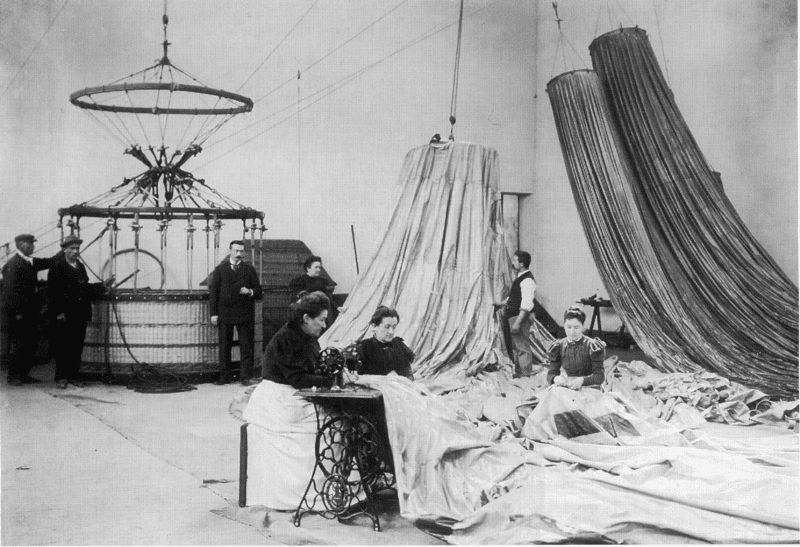 The balloons were manufactured in Gare du Nord and Gare d'Orléans.
The balloons were manufactured in Gare du Nord and Gare d'Orléans.© Wikimedia Commons
Even so, the balloon flights were still risky and unpredictable. The first challenge was to get over the Prussian lines around Paris, ideally at a height that was out of range of musket and artillery fire. Then the pilot had to keep track of the balloon’s position by following landmarks such as rivers and railway lines on a map. But most were flying for the first time and had little idea what the land looked like from above. Once lost, it was almost impossible to recognise where a balloon had got to. A compass was of little use without a point of reference to take a bearing. Eventually, the only option was to shout down to someone on the ground and hope they were friendly.
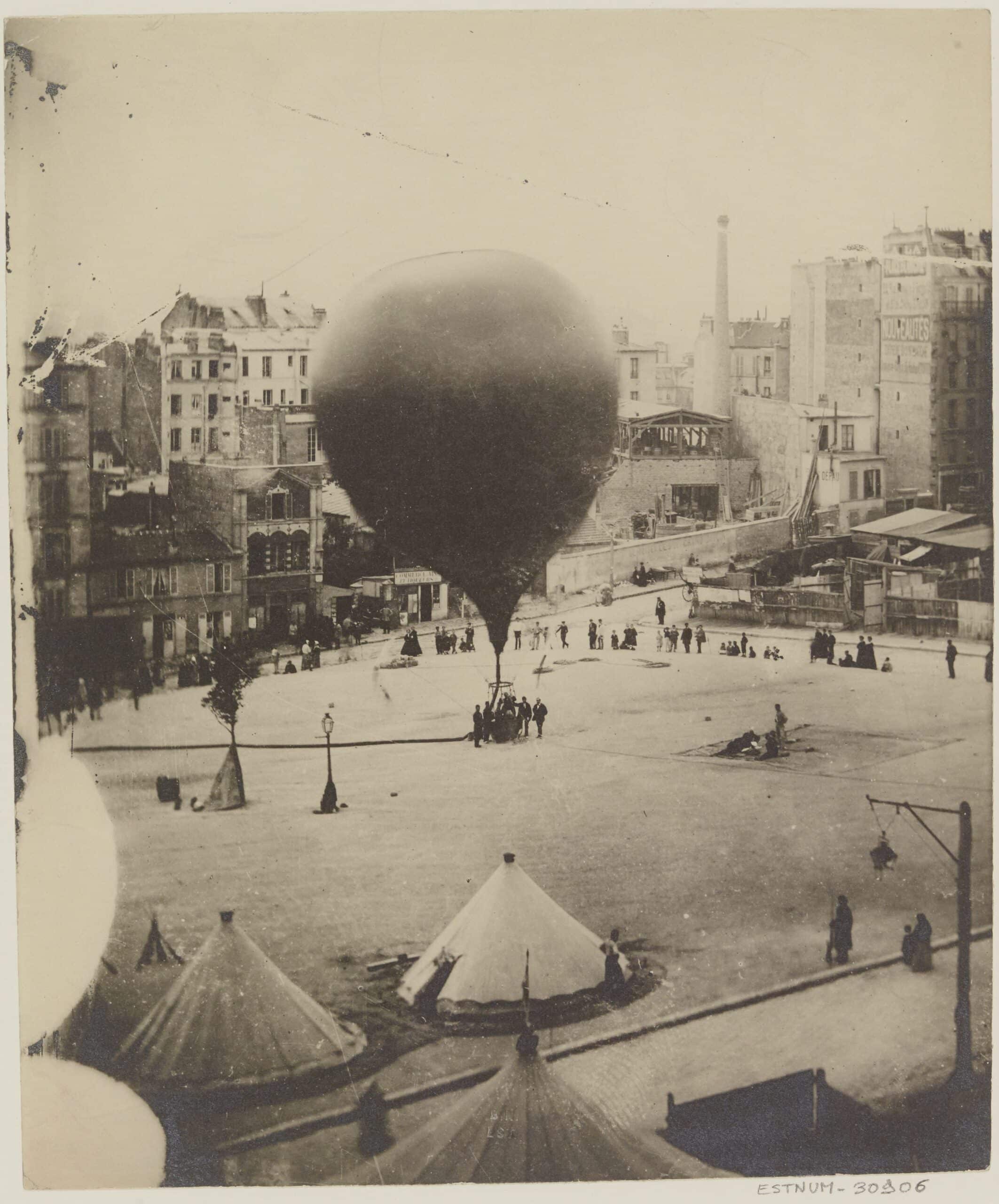 The Neptune, the first balloon to leave besieged Paris, preparing to take off.
The Neptune, the first balloon to leave besieged Paris, preparing to take off.© BNF/Europeana
Then Prussian cavalry started chasing the balloons, even into unoccupied territory. After a number were captured, and the pilots treated like spies rather than postmen, a decision was taken to launch under cover of darkness. This made navigation even harder since with so much inflammable gas overhead you could not light a lamp to read a map. Sunrise might show the pilot a completely unfamiliar landscape, or in the worst case nothing but the sea beneath the basket.
Whatever their feelings about the risks, the experience of leaving Paris by balloon left a strong impression on those who made the journey. Jules Buffet, a naval officer who piloted the balloon l’Archimède as far as the Belgian-Dutch border, wrote a vivid account of his flight. He took off from the Gare d’Orléans after midnight on 21 November, carrying 220kg of mail, two passengers and five homing pigeons to carry messages back into Paris.
“While attending to my balloon’s ascent, I looked amazed at the panorama that unfolded beneath us,” he recalled. “Silence reigned in the basket, broken only by the words of admiration that escaped our lips. Paris, seen by night and from that height (we had risen to 2,000 metres), was thrilling. The lights on the ramparts combined to surround the city with a girdle of fire, and the streets stood out as brilliant intersecting lines. Then everything merged, and Paris became no more than a bright patch, then a point of light, then a mere glow, and then disappeared completely.”
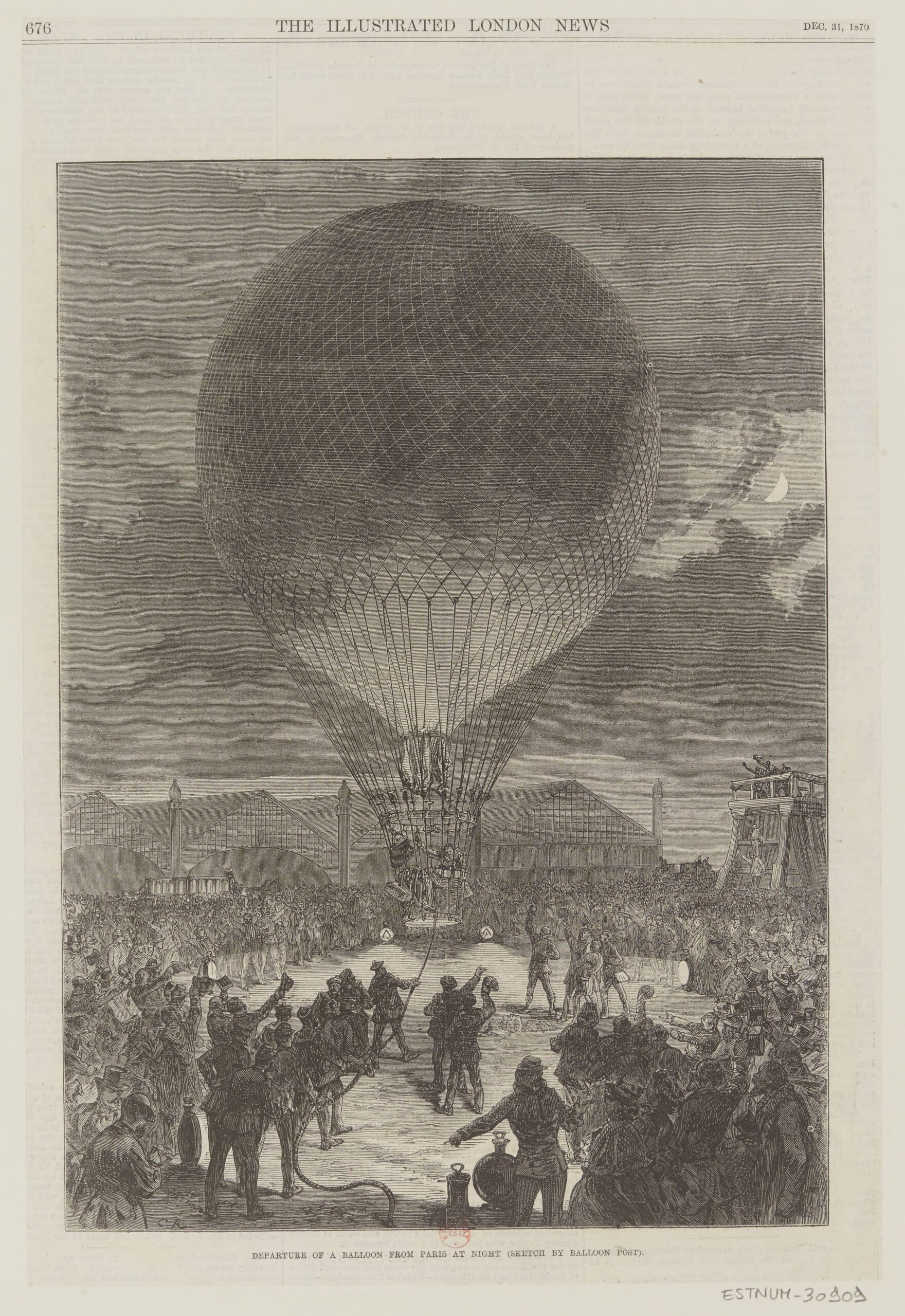 Departure of a balloon from Paris at night, from the Illustrated London News of 30 December 1870.
Departure of a balloon from Paris at night, from the Illustrated London News of 30 December 1870.© BNF/Europeana
As they flew north, they could only speculate about the fires they saw below. Were these Prussian camps? The whitish lines against the dark ground were roads, while towns appeared sketched out in fire. “Suddenly, the whole earth appeared illuminated: glimmers of red, very close together, fading in and out, caught our attention, and a distant rumbling reached our ears. I later learnt this was the Charleroi coal basin, its innumerable forges and blast furnaces the source of these lights and startling noises.”
Night passed in alternating shadow and light, until the dawn began to break, slowly revealing the countryside below. Agreeing with his two passengers that the flat, regular landscape must be Flanders, Buffet started his descent. As they came close to the ground, they found themselves blown along at high speed. They dropped down, then had to rise again to avoid a house concealed behind a row of trees. Then they landed, with two violent shocks. Peasants from the fields rushed up to the balloon. Buffet asked them where they had landed but could not make himself understood. Finally, he got the name of the place: Castelré, a hamlet of the Dutch municipality of Baarle-Nassau, bordering Belgium. This was both a relief and a surprise: in seven hours they had travelled roughly 400km.
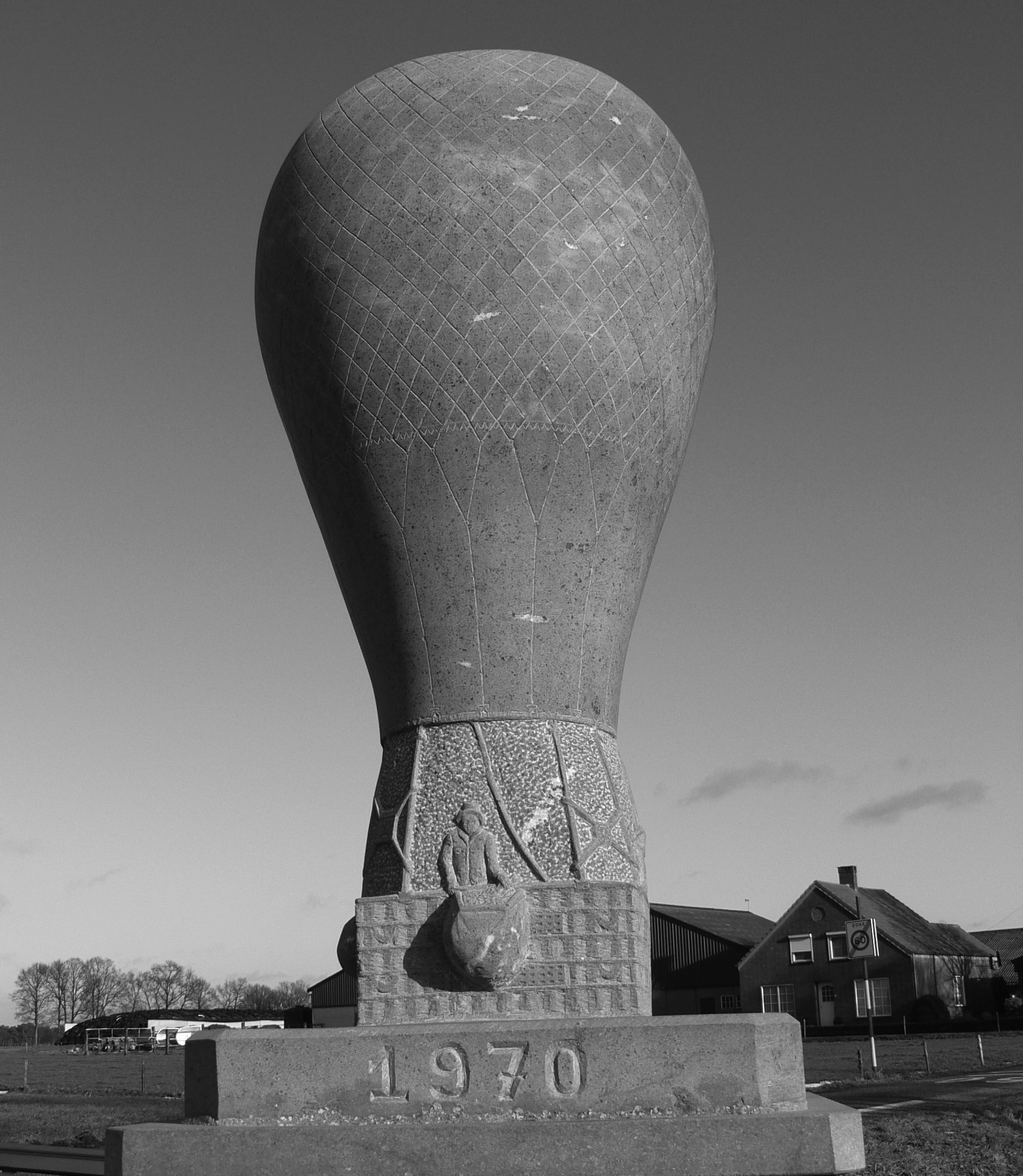 On 9 August 1970, a small monument was erected at the probable landing site of l’Archimède, one hundred years earlier.
On 9 August 1970, a small monument was erected at the probable landing site of l’Archimède, one hundred years earlier.© Amalia van Soms
Buffet deflated the balloon with the help of the peasants, although he had trouble convincing them to put out their pipes when near the escaping gas. In the meantime, nearby Hoogstraten Castle sent out a carriage to collect the intrepid travellers, offering them a place to stay until transport could be arranged to Turnhout for them and their equipment. From there they took the train to Brussels, and then on to Gambetta’s government outpost at Tours.
Just as Buffet looked wonderingly down at Flanders, so Flanders followed the progress of his balloon through the skies. Dispatches telegraphed to the newspapers reported sightings over Lier, Berchem, Deurne, and Borgerhout, with the balloon apparently heading for Antwerp. After that, it had been lost from sight. Its subsequent landing was also reported, both for the spectacle and the news it brought from Paris. One correspondent wrote to L’Etoile belge to say that the balloon had attempted to land near Mechelen, only to be scared off by the sound of musket fire. It was not the Prussians, as the balloonists feared, but rather the citizens of nearby Hofstade who were shooting, to celebrate the installation of a new mayor.
 Dutchmen who stayed in Paris at the time also used the balloon to send mail to family and friends. They were the first Dutchmen to send "real" airmail.
Dutchmen who stayed in Paris at the time also used the balloon to send mail to family and friends. They were the first Dutchmen to send "real" airmail.© Amalia van Solms
People already knew that the Parisian mail balloons might reach Belgium, following a series of landings in mid-October at Béclers near Tournai, Froidchapelle near Chimay, and Evrehailles near Dinant. Local accounts of these landings also filled the papers. At Béclers, for example, the balloon picked up a large number of apples when its basket was dragged through an orchard. Once on solid ground the Frenchmen recounted their journey, which initially took them towards Boulogne-Sur-Mer and the sea, before the wind changed and brought them back inland.
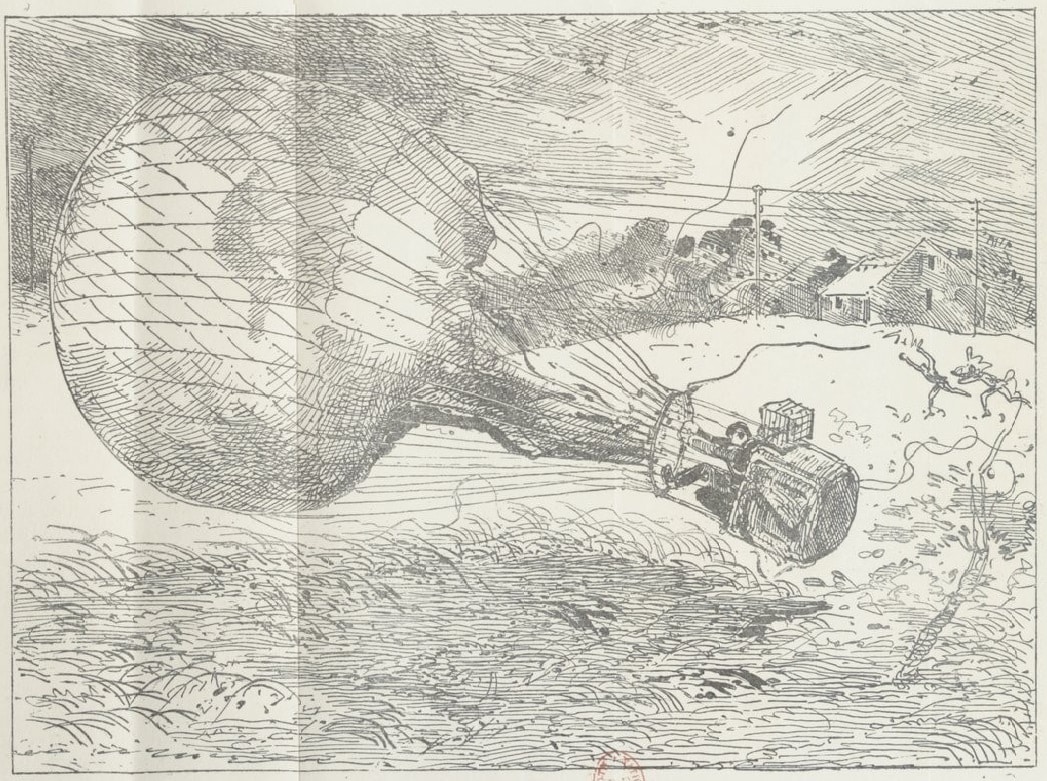 Sketch of the landing at Béclers, from Voyage du ballon le Louis-Blanc (1874) by its pilot, Eugène Farcot.
Sketch of the landing at Béclers, from Voyage du ballon le Louis-Blanc (1874) by its pilot, Eugène Farcot.© Gallica/BNF
The landing at Evrehailles also took place in a high wind, with the pilot taking the unconventional step of cutting the cords between basket and balloon on landing, leaving one on the ground while the other flew away. This was a piece of improvisation on the part of the pilot who, like Buffet and many other pilots, had never before flown in a balloon. And since they could not get back into Paris to fly again, there was no way to profit from their hard-won experience.
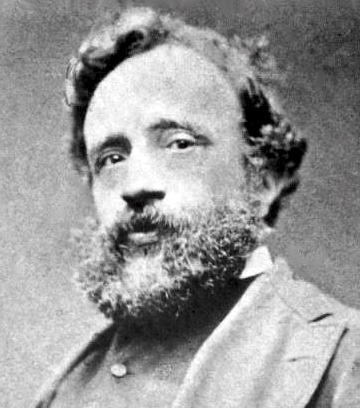 Balloonist and science journalist Wilfrid de Fonvielle, who landed near Leuven in November 1870.
Balloonist and science journalist Wilfrid de Fonvielle, who landed near Leuven in November 1870.© Wikipedia
The pilot who landed near Leuven was of a different calibre. Wilfrid de Fonvielle was a journalist who specialised in science, and an experienced balloon builder and pilot. He disagreed with the night flights out of Paris, arguing that any advantage was not worth the handicap of flying blind, and so put together a private flight to make his case. He set off at 11 am from the Vaugirard gas works, carrying three paying passengers and a co-pilot. The authorities refused to give him any dispatches or mail, arguing that he was sure to be captured. Instead, these were entrusted to an official mail balloon departing the following night; that flight that ended 1300km away in Norway, with all the mail lost along the way.
De Fonvielle’s balloon, called l’Egalité, attracted a lot of musket fire as it sailed over the Prussian lines, although no bullets reached them. Being seen was also part of his plan: “It was good for our great republican cause to exhibit republican aeronauts bringing news in spite of the Prussian armies,”
he later wrote. He also maintained that he knew where he was at all times, and chose to land between Brussels and Leuven, although the landing was not very elegant. A violent wind hurled the basket across the countryside, its progress only halted when peasants grabbed the anchor ropes, one of them hacking at the balloon with a sickle to release the gas.
The mail balloons continued to leave Paris through December and January, with two more landing in the Netherlands, and one in Belgium. The flight of the balloon Steenackers
on 16 January was particularly dramatic. It was seen passing over Brussels and Antwerp in the morning, but the pilot had underestimated their speed and thought they were still over occupied territory. The sight of the sea changed his mind, and he brought the balloon rapidly to earth. Pilot and passenger leapt from the basket, with one sack of mail, while a second sack was carried away as the now unmanned balloon took off again.
They had come down near Harderwijk, on the edge of the Zuiderzee. The following day, local fishermen ventured onto the frozen sea with sledges to look for the balloon. They found it caught in the ice near the island of Urk, and were able to bring both the craft and the lost letters back to land.
Paris finally surrendered to the Prussians on 28 January 1871. In the aftermath of the siege, there was much discussion of balloon flight and its further development, particularly for military uses. Work on new steering methods begun during the siege also continued, and within a few years, the first ‘dirigibles’ took to the air.












